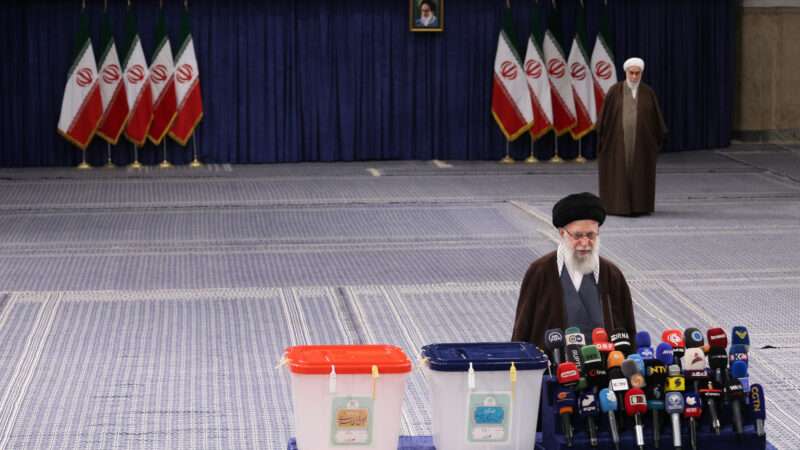Record Low Turnout in Iran as Voters Lose Faith in Elections

- Oops!Something went wrong.Please try again later.
Iranians went to the polls on Friday—or didn't—for the first time since a women-led uprising against religious rule rocked the nation. Authorities reported a record-low turnout of 27 percent, even after they extended voting for an additional two hours, amidst widespread disillusionment and calls for an election boycott.
The country had suffered months of unrest following the death of Mahsa Amini, who was arrested for not complying with the country's mandatory hijab rule in September 2022. Although the streets have calmed down, it was the most significant challenge to the Islamic Republic yet.
The Iranian government was clearly hoping that the parliamentary elections would be an opportunity to show that Iranians had renewed their trust in the system. Supreme Leader Ali Khamenei recently argued that voting was an act of resistance against the Islamic Republic's enemies. Banners in public places stated that "strong turnout = strong Iran."
Instead, the election became an opportunity for Iranians to show that they were still fed up with the system. Jailed women's rights activist Narges Mohammadi, who won the Nobel Peace Prize last year, called on Iranians to avoid the "sham elections" in order to show the "illegitimacy of the Islamic Republic."
Even many figures from within the Iranian system declared their intent to boycott. A group of 300 political figures, including former members of parliament, signed a petition stating that they would not participate in an "engineered" vote.
The news site Khabaronline cited a poll in the run-up to the election projecting a 36 percent turnout. Authorities ordered the article deleted. The final turnout number turned out to be ten percent lower than the offending poll.
Since the 1979 revolution, Iran has had a mix of democratic and theocratic institutions. Election turnout has rarely fallen below 50 percent and has sometimes reached as high as 70 percent. Iranian "leaders crave constantly high turnout as evidence of the people's love of the revolution, but…loathe the results that high turnout always brings," in the words of political scientist Shervin Malekzadeh.
Over the past few years, the government has dropped the pretense of caring. During protests in November 2019, authorities launched a crackdown that killed hundreds of people, then banned thousands of candidates from the February 2020 parliamentary election. A record low 42 percent of voters turned out that year, a result that the Iranian government blamed on coronavirus and "negative propaganda."
Even Hassan Rouhani, who was President of Iran during the November 2019 crackdown, has been banned from running for office. He joins a long list of elected Iranian leaders who have outlived their usefulness to the system, including former President Mahmoud Ahmadinejad, who was in office during the 2009 protest wave and crackdown.
Ahmadinejad and Rouhani have both refashioned themselves as dissidents.
"Something should have been done to make these elections more competitive. Instead, they limited people's opportunity to participate," Rouhani said in an August 2023 interview. "Those who are in favor of minority rule over the majority should know that they are threatening the future of the system and the revolution. It's not so easy to call this system an Islamic republic anymore."
The post Record Low Turnout in Iran as Voters Lose Faith in Elections appeared first on Reason.com.

